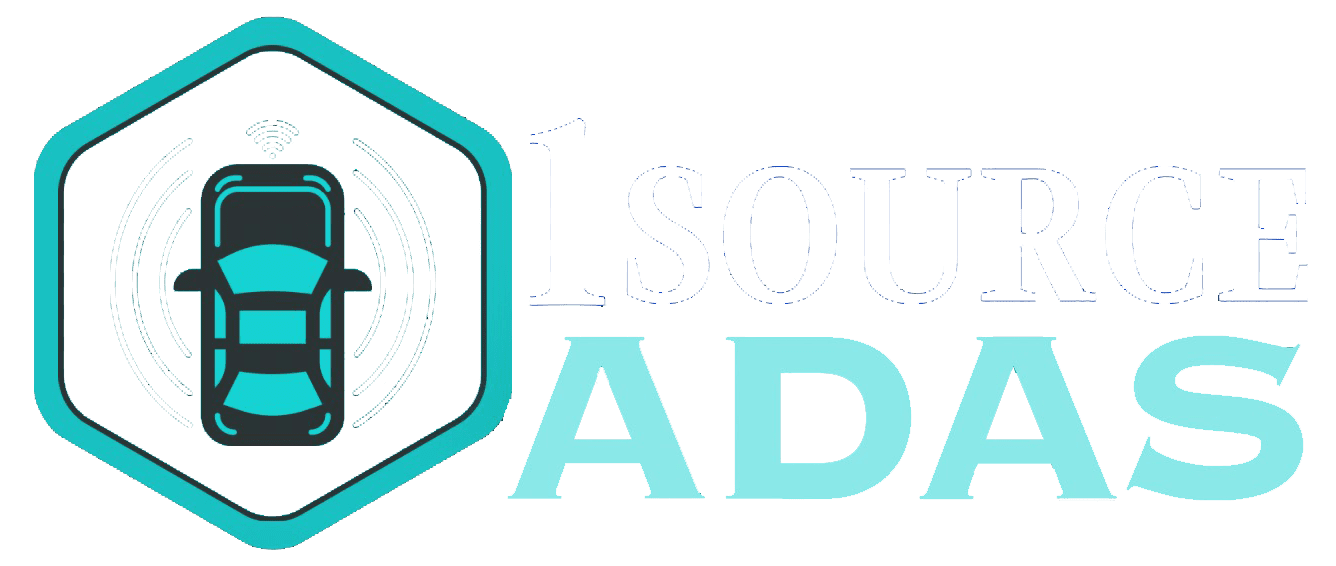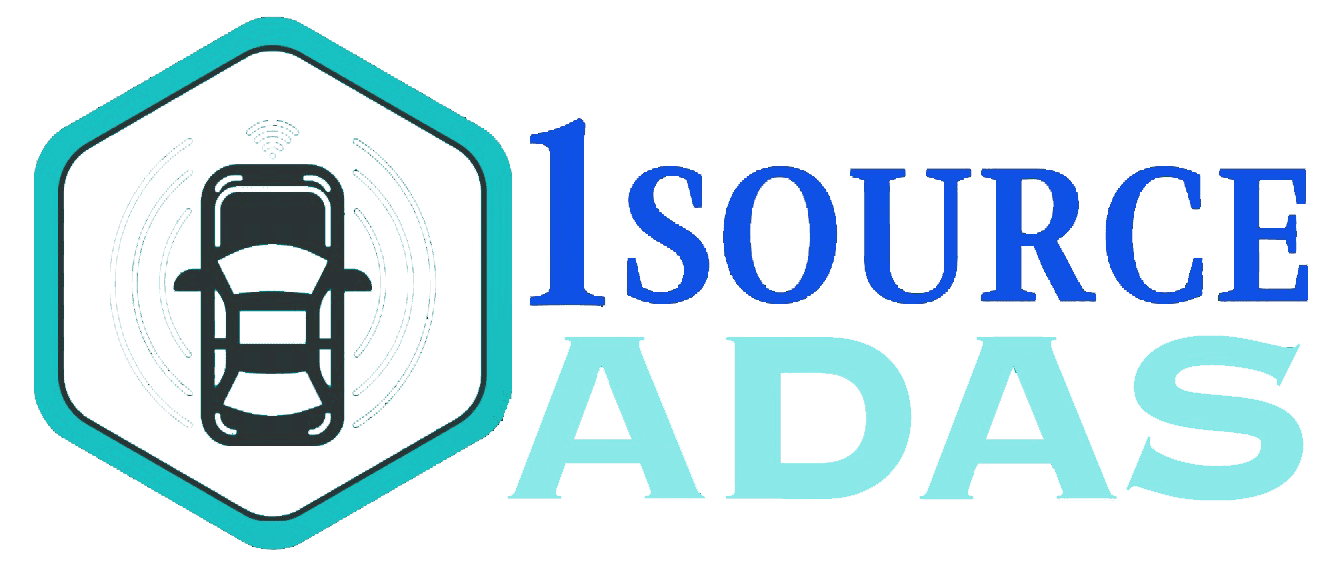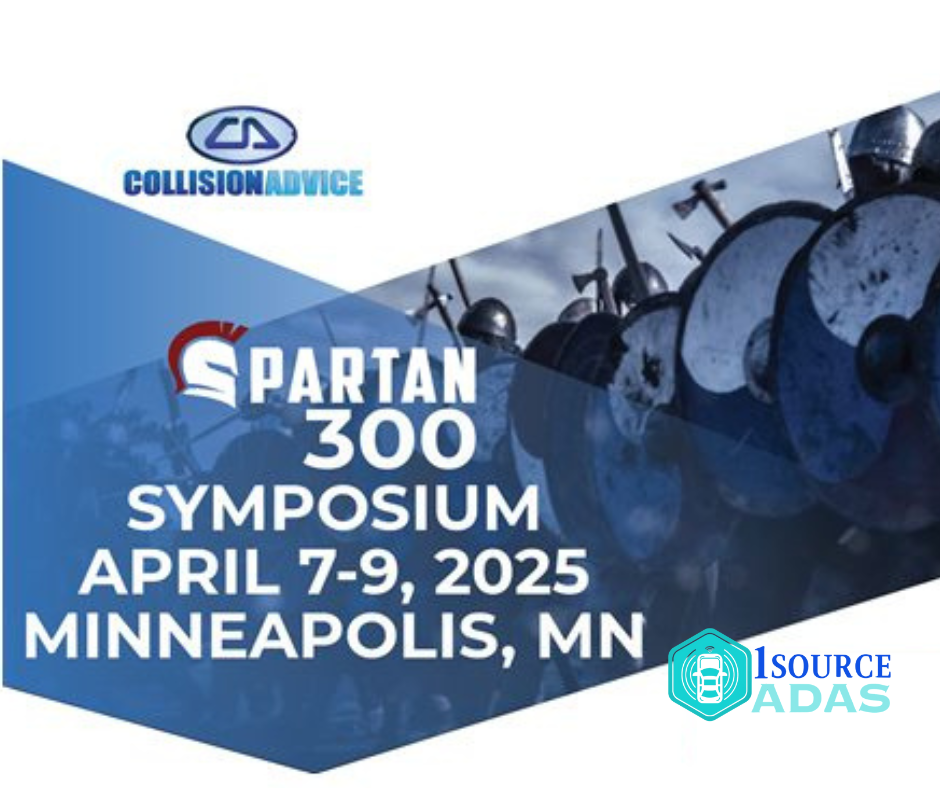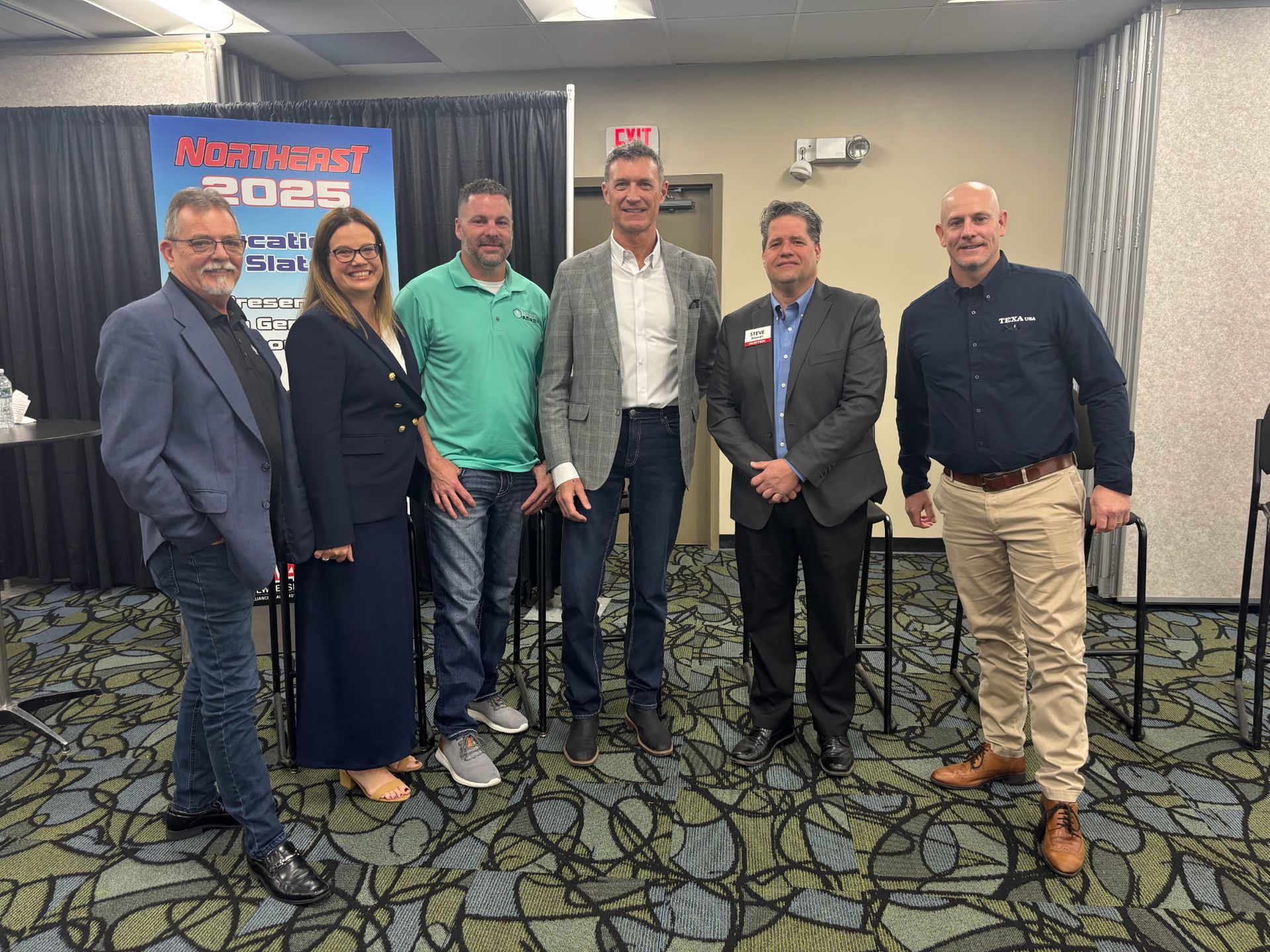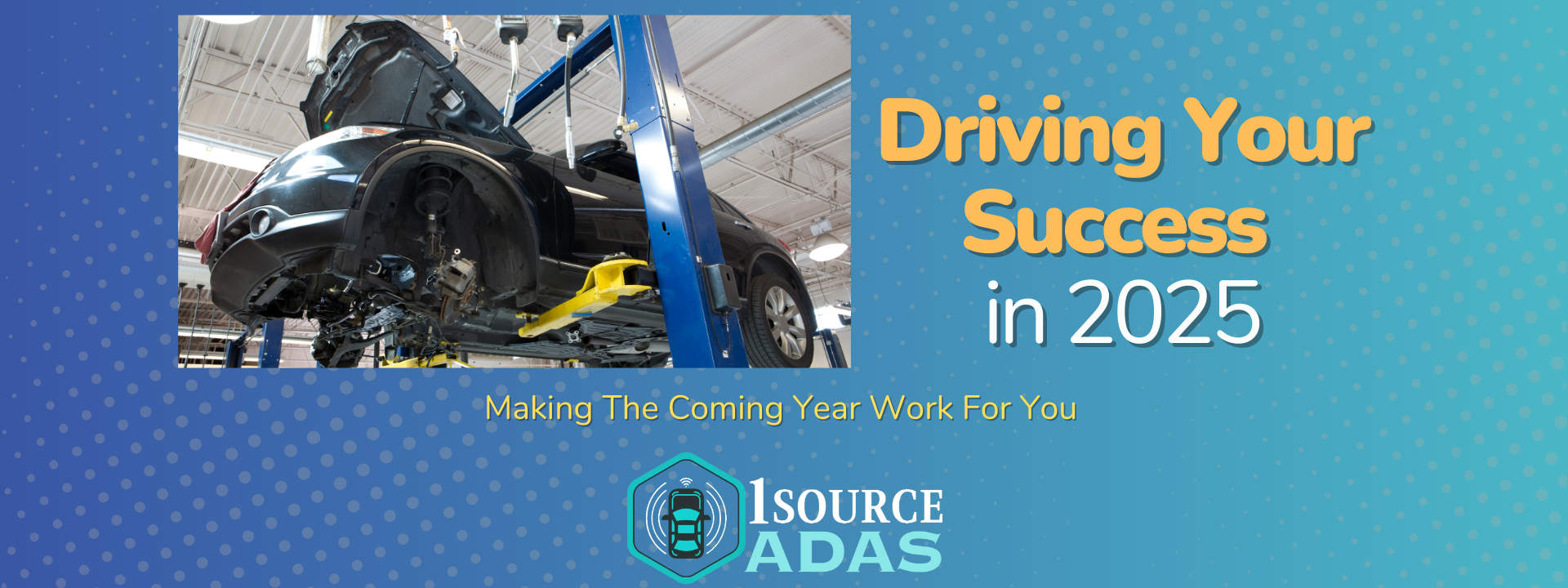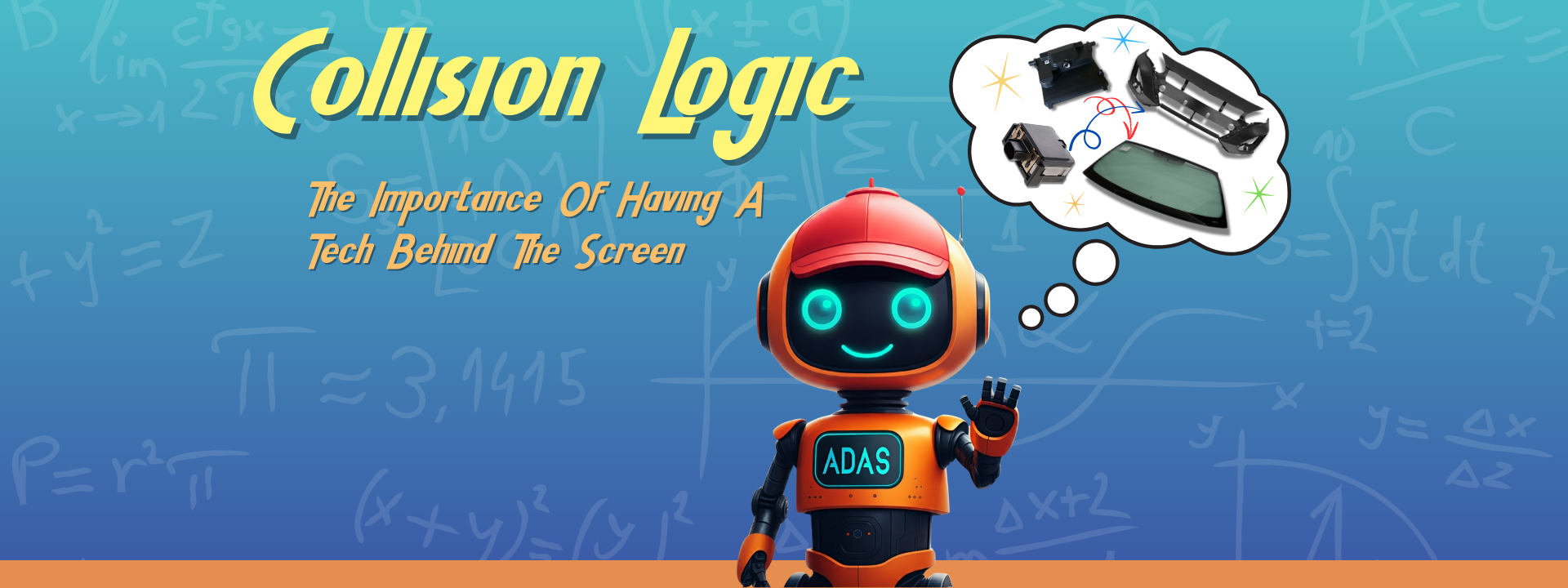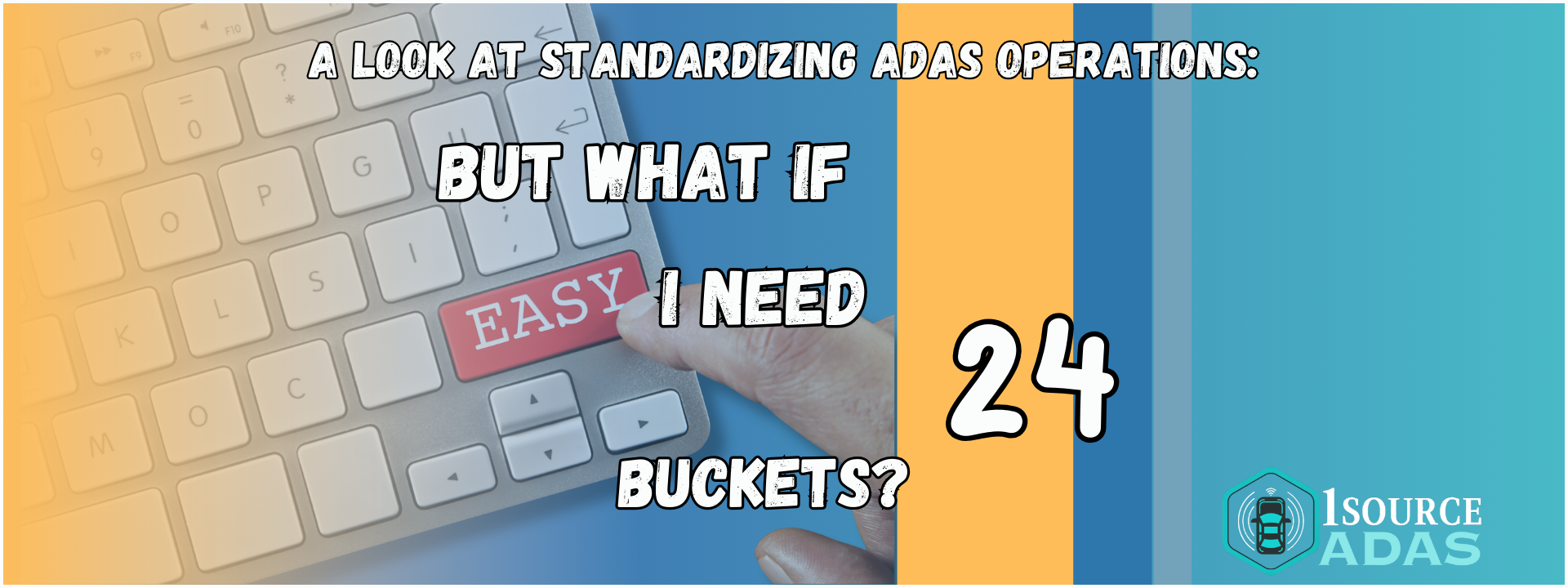Contact@1sourceADAS.com
As we enter 2025, the collision repair industry faces unique challenges.

From the ever-evolving landscape of Advanced Driver Assistance Systems (ADAS) to shifts in the retail auto market,
collision repair shops must adapt to thrive. With claims count decreasing and vehicle complexity
on the rise, the pressure is on to maximize profit per job, streamline operations, and ensure
repairs are correct and complete every time.
Resolutions are cliche, but 2025 is the year to focus on getting it right. Proper ADAS service,
WIP (work in progress) management, and maximizing touch time will be paramount to success.
The Growing Importance of Servicing ADAS
ADAS technologies are no longer a luxury—they are standard in many new vehicles. These
systems, including lane-keeping assist, adaptive cruise control, and automatic emergency
braking, require precise calibration after an accident to ensure they continue functioning
correctly. As more vehicles on the road are equipped with ADAS, the need for calibration and
diagnostic services will increase. However, many shops still assume no light on the dash means
there are no issues.
Servicing ADAS systems requires specialized equipment, training, and knowledge. Collision
repair shops must decide how to address ADAS in their repair spaces in 2025. Whether they
invest in the space, equipment, and training to take calibrations on themselves or have a trusted
sublet partner to handle the work, ignoring ADAS in 2025 is not an option. Failing to address
ADAS may result in missed revenue opportunities, improper repairs, customer service issues,
and warranty comebacks. As we look to 2025, shops prioritizing staying up-to-date with ADAS
technology and certification will position themselves as leaders in the industry, ensuring they are
prepared for the challenges ahead.
Decreasing Claims Count and Falling Used Car
Values
Another significant challenge facing the industry is the ongoing decline in claims filed. The Q4
Crash Course report from CCC notes drops in claims count and used car values
(https://www.cccis.com/reports/crash-course-2024). As vehicles become more reliable and
advanced, accidents are expected to decrease, directly impacting the volume of work for
collision repair shops. In addition, falling used car values mean that the repairable vehicle pool
is shrinking due to increased repair costs and lower vehicle values. Every repairable vehicle
counts.
This presents a serious dilemma for repair shops. Fewer claims mean less revenue, and lower
payouts on claims mean smaller profit margins. As a result, collision repair shops must adapt by
maximizing profitability for each job they handle. Refining internal operations becomes crucial
for processes that impact internal KPIs.
Maximizing Profit Per Job
Every completed repair must be precisely that—complete. Customer service reviews count
more in decreased volume settings, so it's a win anytime a comeback can be prevented.
Complete repairs also maximize revenue. This is not a year of leaving things on the table.
Efficiency is becoming more critical moving forward. To start maximizing repair revenue, you can
improve your outcomes and efficiency with blueprinting, improving touch time, and getting a
handle on your work in progress.
Blueprinting is doing a complete teardown and providing a proper estimate for every vehicle
every time. In short, this entails bringing the car in, assigning a technician, having the technician
complete the disassembly, and writing a single estimate that captures all the damage and
operations. This includes pulling procedures for operations, running your 1Source ADAS report,
and confirming parts price and availability. Having a complete estimate at this stage allows for
effective negotiation and lets you set realistic promise dates. Getting paid in full for your work
and delivering the car on time becomes attainable for almost every repair.
Touch time is the time per day a technician spends actively working on a vehicle. By improving
touch time, shops can reduce cycle time and increase throughput, allowing them to complete
more jobs within a given period. For instance, reducing unnecessary downtime between tasks,
streamlining workflows, and eliminating inefficiencies in the repair process will result in higher
productivity without increasing labor costs. How often do your technicians have to stop working
on a vehicle? Remove those stoppages, and you’ll see a world of difference. Not sure what the
causes are? Just ask your techs!
Work-in-progress (WIP) management is another critical factor in maximizing profit and
workflow efficiency. Efficiently managing WIP ensures that repair shops don’t have idle vehicles
waiting for parts or labor to become available. Delays in parts procurement or disorganization in
the shop can significantly increase cycle time, resulting in lost revenue and decreased customer
satisfaction. By improving WIP management, shops can reduce idle time, get parts in faster, and
keep technicians busy. Know how many hours per week your techs can handle and schedule
accordingly.
Shops that properly blueprint, maximize their touch time, and improve WIP management will
remain profitable even with fewer jobs. This efficiency translates to improved cash flow, better
customer satisfaction, and more revenue per repair. It's about doing more with less, making the
most of every job, and ultimately staying competitive in a changing market.
The Road Ahead
The collision repair industry is facing challenges that are reshaping the way shops operate. The
rise of ADAS technologies, decreasing claims counts, and falling used car values create
pressure to evolve quickly and efficiently. However, by implementing programs to turn ADAS
into a revenue stream, properly blueprinting vehicles, and improving internal KPIs like touch
time and WIP management, shops can survive and thrive in 2025 and beyond.
The key to success is embracing these challenges as opportunities for growth and
improvement. Shops that invest in technology, streamline operations, and maximize profitability
on each job will be well-equipped to navigate the future of the collision repair industry. The road
ahead may be uncertain, but repair shops can ensure they are ready for whatever comes next
with the right strategies.
The 1Source ADAS Difference
A complete repair plan before ordering the first part is crucial for efficiency. ADAS operation
identification is a critical step in the blueprinting process. With the 1Source ADAS platform, you
can upload a repair estimate to identify every calibration, pre-calibration requirement, and
required safety inspection.
The 1Source ADAS platform reviews your estimate and provides the requirement
documentation and procedure pages for completing every aspect of the ADAS portion of the
repair. Start your free seven-day trial today at https://1SourceADAS.com to see all the benefits
proper ADAS reporting adds to your repair process.
1 Source ADAS, based in Longview, Texas, is a leading provider of ADAS calibration software and solutions, expertly designed to support automotive professionals. Our technology ensures the highest safety and performance standards by delivering precise calibration and detailed reporting for all ADAS-equipped vehicles.
OFFICE HOURS
- Monday
- -
- Tuesday
- -
- Wednesday
- -
- Thursday
- -
- Friday
- -
- Saturday
- Closed
- Sunday
- Closed
GET INDUSTRY UPDATES
Get updates on the software, industry news, and tips!
©2023 - 2025 1 Source ADAS. All rights reserved.
